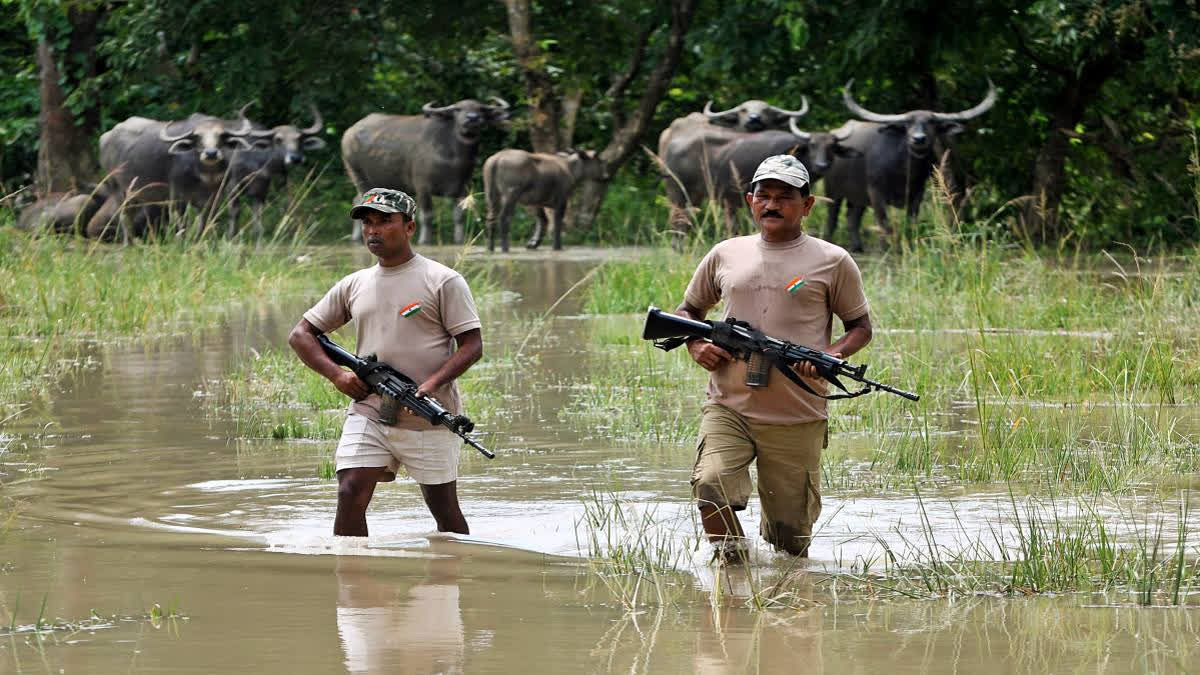Hyderabad:The National Forest Martyrs Day is commemorated annually on September 11 in India. It's a day dedicated to honouring the countless activists who have made the ultimate sacrifice in defence of India's jungles, forests, and wildlife.
In 2013, the Ministry of Environment, Forest and Climate Change specifically selected this date to establish National Forest Martyrs Day, aligning it with the historical Khejarli Massacre.
Significance:
Because it honours and recognises the sacrifices made by forest guards, rangers, and other personnel who have lost their lives while performing their duties, National Forest Martyrs Day is important. This day serves to highlight how crucial it is to conserve forests.
It serves as a reminder that forests are more than just collections of trees; they are intricate ecosystems that sustain a wide variety of species, preserve ecological harmony, and offer numerous advantages to people. Attention is drawn to the risks faced by forest rangers in their fight against illicit activities like poaching, logging, and encroachment.
History:
In India, the history of National Forest Martyrs Day is intricately intertwined with themes of environmental awareness, selflessness, and sacrifice.
The Inspirational Seeds:
Early 20th century and late 19th century: Even though there have always been heroic deeds to save forests, awareness of the dangers facing India's forests grew in the late 19th and early 20th centuries. Dedicated people who frequently faced risks and adversity while performing their duties, such as Jim Corbett and E.P. Gee, championed conservation efforts.
The Khejarli Massacre: A turning point in the history of Forest Martyrs Day was this terrible incident. Maharaja Abhai Singh of the Marwar Kingdom gave the order to cut down Khejri trees, which are revered by the Bishnoi community. The villagers, led by Amrita Devi Bishnoi, embraced the trees and voluntarily gave their lives in order to keep them safe. This peaceful protest turned into a national movement and a powerful emblem of environmental action.
From Misfortune to Remembering
1972–1982:The Khejarli massacre gave rise to a renewed push for forest conservation. Campaigners and environmental organisations pushed for acknowledging the sacrifices made by those who defended the natural world. In 1982, the Indian government finally established a national holiday on September 11, National Forest Martyrs Day, to honour their memory.
Changing Memories: Over time, Forest Martyrs Day has evolved to commemorate all those who have given their lives in defence of India's forests and wildlife. On this day, we honour forest officers, rangers, wildlife activists, local communities, and everyone else who has fought against threats like poaching and deforestation.
How to Celebrate National Forest Martyrs Day 2024?
Tree Plantation Drives: To support forest conservation, take part in or lead a tree planting drive. A poignant way to remember those who lost their lives defending forests is to plant trees.
Educational Programs:To increase public awareness of the value of forests, the preservation of wildlife, and the sacrifices made by forest martyrs, schools, colleges, and community centres can hold seminars, workshops, and other educational events.
Commemorative Ceremonies: Honour the forest martyrs by hosting or participating in memorial services. Moments of silence, speeches, and the telling of tales about the bravery of those who lost their lives defending the environment are frequently included in these ceremonies.
Awareness Campaigns: To raise public awareness of the value of forest conservation and the significance of National Forest Martyrs Day, organise or sponsor webinars, social media campaigns, and other activities.
Activities for Cleaning Up the Forest: Take part in or plan clean-up campaigns in the nearby green areas and forests. This demonstrates a dedication to protecting the environment and contributes to the preservation of these places' natural beauty.
Participate in volunteer work with environmental organisations: Help local environmental NGOs and forest departments that strive to protect and conserve forests by donating your time and expertise.
Encourage Sustainable Practices: Utilise this day to take stock of your own behaviours and resolve to embrace more environmentally friendly habits. Some examples of these practices include cutting back on paper consumption, staying away from single-use plastics, and purchasing eco-friendly goods.
Watch Documentaries or Films: Get together with loved ones or neighbours to watch documentaries or films that highlight the stories of people who have devoted their lives to the preservation of wildlife, forests, and other natural resources.
Tell Sacrifice Stories: Share the significance of forest conservation and the tales of forest martyrs on social media. This promotes awareness-raising and inspires others to support environmental protection initiatives.
Visit Forests or Protected Areas: To foster a sense of connection with nature, acknowledge its beauty, and consider the significance of maintaining these natural resources, spend a day at a nearby forest, national park, or wildlife sanctuary.
